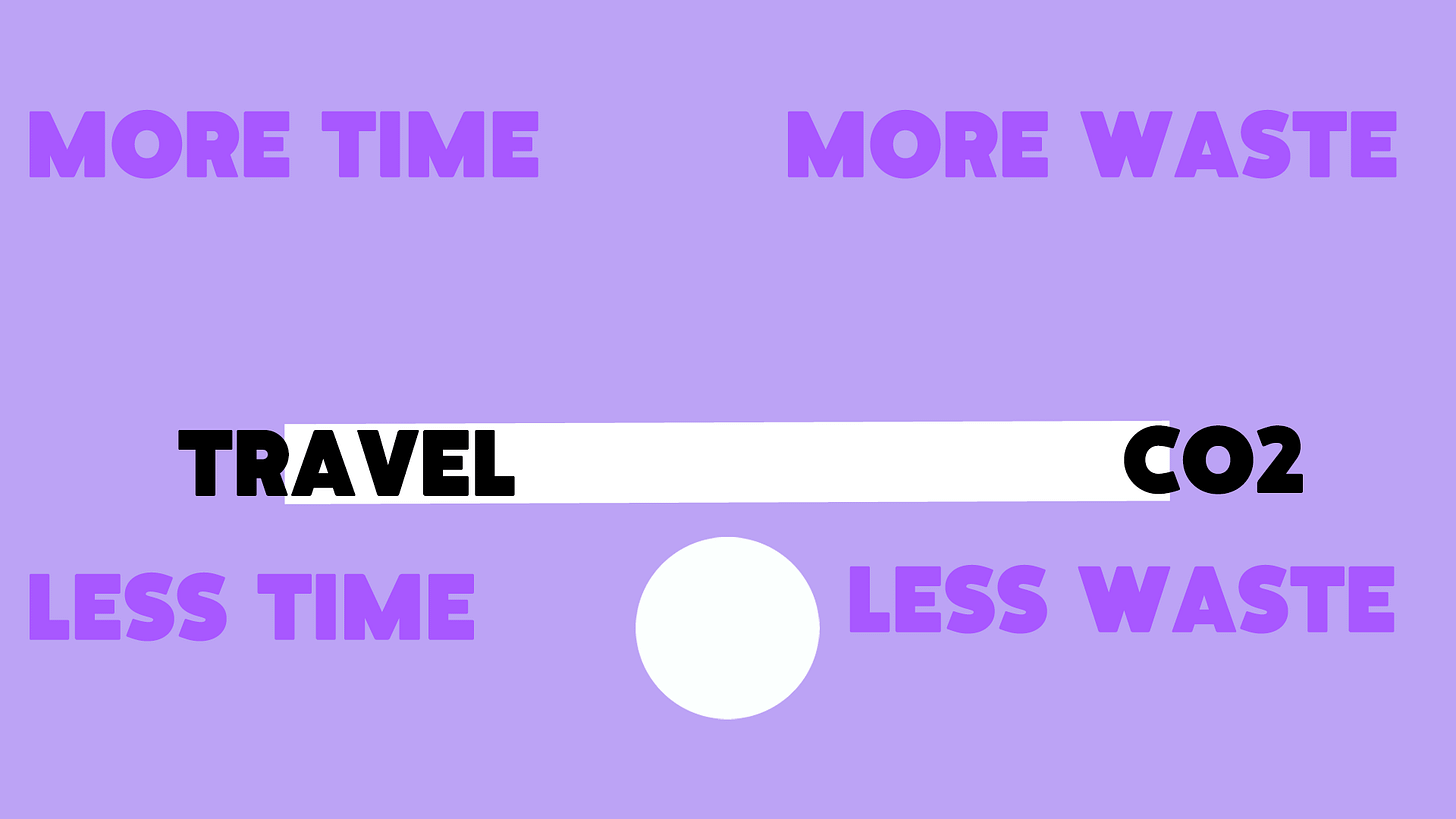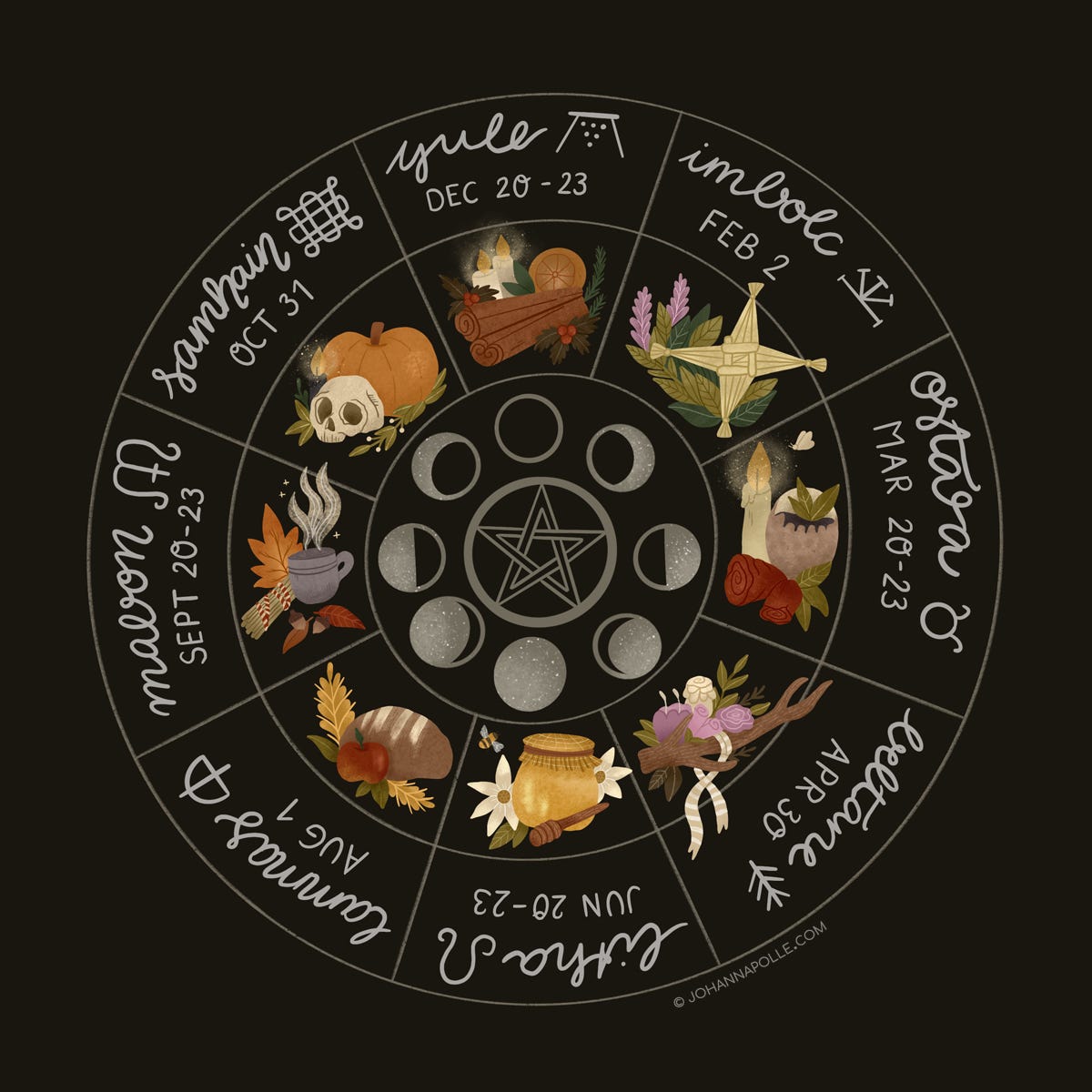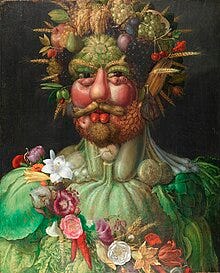Getting off the ‘time highway’: reconnecting with the rest-of-nature through the wheel of the year
How aligning with seasonal cycles can help us make choices that regenerate ourselves and the world
“Time is not slipping through our fingers, time is here forever, it is we who are slipping through the fingers of time… Time needs me: needs me to live through all its many appearances, to give It life and amplitude. Time exists in a field of possibility which I influence and partly determine. I may constantly cry that I need more time, but actually time needs more of me - more of our spacious, uninterrupted timeless time to live out and understand both its extraordinary depths and its incalculable far off horizons.”
Caught in the fast lane of a time highway, I feel time rushing past me like the landscape through a side window. Moving ever onwards, I fret I’ve missed an exit, the route to time better spent. There are exits that give me the chance to leave, yet I only take them as a brief meandering detour before speeding back into the flow of traffic that pulls me forwards.
The time highway is – as real highways are – created by the industrial, capitalist need for efficiency, for getting somewhere fast, for being productive. Time here is linear, with a forward trajectory and a sense of progress.
Much time is spent on such a highway. The impact can be felt in our bodies, pulling us out of shape like g-force, and also, I believe, in how we engage with the world.
Less time, more damaging defaults
Swept away on the time highway, we follow the signs to efficiency and productivity despite the consequences. In a bid to make the most of our time we choose default options that promise speed and ease.
Writing for Ecover, Ted Hunt describes the relationship between less time and more waste. The less time we have to travel, the more we rely on planes over trains. The less time we have to buy, prepare and eat food, the more we rely on fast-food or ready meals (with more packaging and food waste). The less time we have, the more we believe we can meet our needs through consumption (using more resources).
Our individual choices impact the world around us and the defaults and norms on the time highway often corrode our planet’s resources and resilience. Our disconnection fuels environmental harm, as we make choices based on convenience and profit rather than care and sustainability.
“The world, the values of the world, are shaped by the choices each of us makes. Which means my thinking, my actions, my relationships, and my life create a front line for the possibilities of the entire species. Each one of us is an individual practice ground for what the whole can or cannot do, will or will not do.” Adrienne maree brown, Murmurations: returning to the whole
Less time, more separation
Cocooned in metal, hurtling down the time highway, we become spectators rather than participants in the world around us. The landscape blurs into the background as scenery, rather than a crucial, living, breathing part of our existence. Our focus narrows to what’s ahead of us, to what needs to get done.
This speed and insulation creates an emotional and physical distance from the rest-of-nature. We no longer walk through the woods or feel the rhythm of seasons in our bones – we drive past them, windows up, minds elsewhere. In this disconnection we risk what Robert Pyle calls an ‘extinction of experience’. Nature becomes something out there, apart from us.
But this isn’t just a personal loss, it’s a collective crisis.
When we stop experiencing nature first hand, we stop caring for it. Researchers like Soga and Garston warn that this extinction of experience is a major barrier to reversing environmental degradation.
After all, what we don’t know, we can’t love. What we don’t love, we don’t fight to protect.
“As long as the environment is ‘out there’, we may leave it to some special interest group like environmentalists to protect while we look after our ‘selves’.”
John Seed in Daniel Christian Wahl
This separation leads to more than apathy – it fosters individualistic decision making that doesn’t take the rest-of-nature into account. With less emotional connection to the natural world, we make choices based on convenience rather than care. Less time breeds more separation. More separation means less love, and less love leads to decisions that serve me over Mwe, Dan Siegel’s term for the deep intraconnection between self and others, human and non-human.
How can we break this cycle?
The first realisation that separation was a story not reality was, for me, cognitive. Books awakened me to the notion – and danger – of separation. I feasted on the beautiful, provoking prose of Braiding Sweetgrass by Robin Wall-Kimmerer, and the evidence and political commentary in Lucy Jones’ Losing Eden.
Rationally, I started to understand the importance of more connection. And yet, as Emmanuel Vaughan-Lee shares in Emergence Magazine, “We cannot change the world through a mental construct. We cannot change the world through words alone”
I still missed a felt sense of connection. Not a heady knowing, but an embodied understanding of interconnectedness or interbeing. A deep resonance.
I craved that.
I needed a sign on the time highway to help me take an exit marked ‘connection’, even when the lure of the fast lane was so strong. I realised I couldn’t keep rushing forward, disconnected and discontent. I had to choose differently.
I needed help to re-member – to remember that I am not separate from nature, but part of nature. A member of nature, with a shared future that depends on that deep understanding.
Of course, I read books about how to reconnect (I enjoyed ‘Rooted’ by Lyanda Lynn Haupt, as well as those above). But what made the biggest difference to me was starting to observe and create rituals around the wheel of the year.
Wheel of the year as a connection mechanism
The wheel of the year divides the calendar year by the movement of the sun. The longest and shortest days (the solstice), the days of equal length (the equinox) divide the wheel into quarters. When you add the cross-points (the moments between those), you end up with a punctuation mark every six weeks.
A punctuation mark. A full stop if you have the time. A comma, if time is tight.
Or, to revisit the highway metaphor, an exit or a rest place that gives you a reminder to get out of our cocoon of productivity and step with awareness into the rest-of-nature.
The eight moments in the wheel of the year provide an opportunity to notice what’s happening around us. A reminder that the season is shifting and that - if we pause - we may spot the first signs of spring, or notice that the days are longer than they have been.
I started practicing with my family. After doing a little research online, we improvise a ritual, maybe lighting a fire or sitting under a tree. We try and find signs of the season around us, read a poem and playfully reflect on prompts (like ‘what would you like to grow?’). There’s often something physical – a movement, a pomegranate, a flower crown. It is playful and often short, as attention dips in and out. It feels easy and joyful.
Over the last three months I’ve also practiced with others, which brings even greater depth and accountability as it instils a shared sense of wonder. I mine the wisdom and beauty in Glennie Kindred’s Sacred Earth Celebrations, and weave in creativity and reflection to craft a shared ritual. An hour together online seems to amplify nodes of possibility – creating deeper resonance and broader ripples of change.
Marking the wheel of the year gives me a greater appreciation for what has been, what is and what’s arriving. And, I realise, they connect me not just to what’s happening around me, but also inside me.
I’m not connecting TO nature, I’m connecting AS nature.
At the start of the calendar year, I struggled to muster the energy to reflect or write. It wasn’t until I marked Imbolc at the start of February that I noticed that as buds were forming, bulbs sprouting and sap rising, my own juices also started flowing again.
The patterns I observe in the outside world are reflected inside me (if and when I give myself permission).
Marking the wheel of the year is a practice that helps me re:member. It creates an imprint which is slowly deepening, becoming more readily available to come back to.
Re:membering as a way to build care and commitment
Re:membering – remembering that we are members of (not separate from) nature is critical to our appreciation and celebration of our planet. This positive emotional response will drive our attitudes and behaviours, which in turn will shape our decision making.
“Humans' personal relationship with nature is a key contributor to pro-environmental behaviour” (Dunne, Lionetti, Pluess, Setti).
As our care blossoms, so too will our commitment to do things differently.
Of course, there are large forces at play when it comes to the polycrises, and – AND – I am a firm believer in the fractal nature of change. A small shift in our awareness influences the choices we make. People thinking, being and acting differently create change.
Paradigm shifts are the biggest leverage point in systems change, but they don’t happen alone. Instead, they occur when enough people start living their lives on the basis of a new paradigm, without waiting for the rest of society to make the shift (Thomas Kuhn in Karen O’Brien, ‘You matter more than you think’).
Together, we can start to sow the seeds of an emergent system.
In an act of micro-rebellion we can step off the time highway, notice the stories of separation that pave that road and grow a meadow (or even just a flower filled verge) of care and connection.
From there, I believe, we will be more committed to taking decisions that serve us as part of nature.
💌 An Invitation to Re:member
Even with the best intentions, it’s hard to pause and reconnect amidst the rush of life. But when we gather— share stories, reflect on the seasons, and create together—something shifts. We re-member. We slow down. We reconnect—not just to nature, but as nature.
I’m inviting you to step off the time highway with me.
Join a virtual circle where we’ll mark the turning points of the Wheel of the Year together—through reflection, creativity, and shared presence.
🌿 What: A free virtual gathering for connection, creativity, and re:membering
🕰 When: Every six weeks, aligned with the Wheel of the Year
💌 How to join: Sign up here
Whether you’re new to seasonal rituals or have long followed the wheel of the year, these calls will be a gentle, grounding pause—a moment to breathe, reflect, and reconnect.
🌸 Ready to re:member? Click here to join us









Your reflections on re membering through the Wheel of the Year are so grounding. I might join the virtual circle soon.
This took me back to my experience of walking the Camino de Santiago. The most enduring part of that experience was the wonder of walking, of covering in a day territory that I'd generally cover in half an hour or so in a car or train. It changed how I see things, how I pace myself, how I see myself. I've struggled to work that into my life. Your words on seasons feel like a way to connect those things. Thank you.